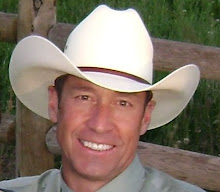Here is a typical "pasture scenario" that I have witnessed time and time again. Farmer Joe has a "pasture" that is more then 10 years old and seems to produce some green forage. It just doesn't seem to holding up to grazing conditions or produce forage for very long. It is critical to note that pastures do decline in their effectiveness over time, and it is a process that can be avoided. So the question continues to come up, "How can we make our pastures better?" followed by the question "Is it worth it?" Yes, but only if you want to make more money. Pasture renovation can be defined as a process to improve species composition and extend the productive life of pastures. The first step in recommending pasture renovations is to take a complete soil sample in order to analyze what you've got to work with. I like to think of good soil test results as my roadmap for the trip I am planning. My father once told me that if you don't care where you're going, it doesn't matter which way you go. On this trip, I want to make sure and optimize my existing pastures, without spending every dime to do it! Without proper soil tests, all we are doing is guessing (at best), and probably not providing the proper fertility requirements for the crop we are about to grow. So, let's live by this motto: "Don't guess, soil test!" Inter-seeding and no-till pasture renovations have doubled and tripled the production of low yielding pastures. While we understand the importance of adding soil amendments to improve forage production, we also should consider introducing new species and varieties to our pasture conditions to improve productivity and quality to our grazing systems. Improved varieties of legumes and grasses like Kopu II, Starfire, Quartet PRg, and Feast II have been University tested to show significant benefits compared to many "old" legumes and grasses. Starfire red clover and Kopu II white clover have been shown to not only offset some of the nitrogen requirements of pasture, but also help improve forage quality, digestibility, and palatability to grazing systems. This means as a producer you save money on your fertilizer bill and your animals will be more productive. Quartet and Feast II ryegrass both are "low aftermath seed heading" varieties. This means that when at maturity instead of continuously trying to produce seed heads (like most other forage grasses) Quartet and Feast II will return to vegetative forage production after one flush of seed heads. What does all of this mean to the producer? Quartet and Feast II will produce high quality forages longer then most other forage grasses resulting in better animal performance. Sometimes existing pasture situations are so poor, the best recommendation is for a complete renovation of the site. This process will include tillage or the use of herbicides to eliminate existing vegetation, adding soil amendments (fertilizer and lime), and reseeding. Complete renovation will also allow for improvements in soil conditioning such as irrigation or soil drainage improvements if needed. An idea that is gaining in popularity is the use of a "break crop" before establishing a totally new pasture. One such type of "break crop" is using an annual such as Perfect FitTM Forage Brassicas. Most producers do not want to have any "down" time between taking out their old pasture and establishing a new one. Perfect FitTM Forage Brassicas offer an excellent forage source, in a relatively quick amount of time. By no-till drilling or by broadcasting on to a lightly disked pasture ground you can establish a productive, high quality forage source in 50-60 days (depending on climatic conditions and fertility kevels). Perfect FitTM Forage Brassicas will allow for the opportunity to "break" the current cycle of available forages, and allow for the reintroduction for improved varieties in the upcoming season. For example, a producer in the Midwest could spray out his old pasture in May. Then no-till Pasja Forage Brassica into it and have a forage source in 40-60 days until mid August. In mid August the producer would once again spray the pasture with a non-selective herbicide. Following a "good kill" the producer would seed the pasture to a Pasture Perfect® seed mixture for a productive permanent pasture. Benefits of renovating pastures include:
Greater Return on Investment (yes, pasture land is an investment!)
Improved Animal Performance and Productivity
Improved Feed Quality
Improve Pasture Growth throughout the year to help regulate growth curves
Introduction of Improved Pasture Genetics
Removal of undesirable traits (weeds, endophyte infected species)
Improve soil drainage and aeration
As you prepare to renovate pasture conditions, choosing what to reseed is always part of the equation. Check with local seed dealer or university extension agent to determine which Pasture Perfect® seed mixture is right for your particular growing conditions.
As a producer, be patient and use good management practices to help new forage seedlings become established. Avoid close grazing of newly emerged seedlings. Maintain fertility levels, and schedule routine rest periods between grazings. Weed control is critical, but beware of broad leaf herbicides when clovers and other broad leaf desirable species are present.
Start with a plan, not just an idea, but a written plan. Write it down and refer to it often. Keep good records and take pictures. If you are like me, it's hard to remember how things looked before changes were made, and it's good to look back and see the progress you've made. Remember, like an artist, when you first start renovating your pasture, it is a work in progress! Continue perusing www.pastureperfect.com for more detailed information and remember, a poor pasture may be costing you money!!!
By: Jeff Medlin--Ampac Seed Company
Monday, May 3, 2010
Subscribe to:
Comments (Atom)




